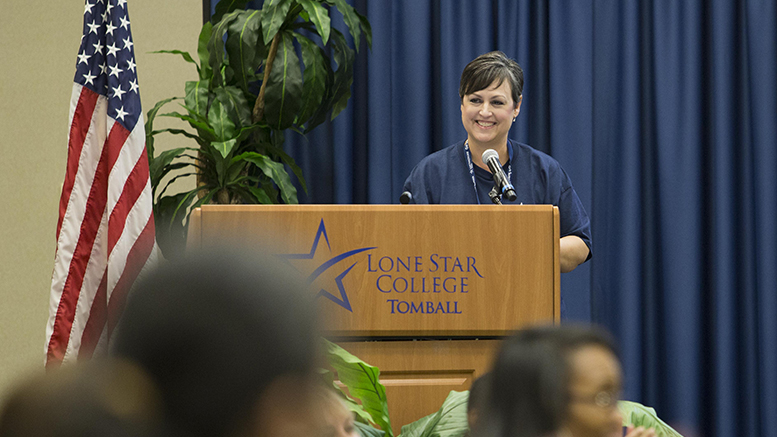In the 1990s, Lee Ann Nutt was chatting with a career counselor who set down a higher education publication in front of her. It was folded to the classified section.
“Read that,” the counselor said, pointing to a job. “That ad just described you.”
The ad was for a college president. Nutt, who had landed at community college work by chance, laughed in disbelief. “Who am I? Just some girl from Borger, Texas,” she thought. “What do I have to offer?”
It was a belief born out of an upbringing being shuttled between parents, step-parents and a grandfather, and living independently as a teenager. Career counseling and guidance was new to her.
This excerpt comes from the April/May issue of AACC’s Community College Journal.
But it turned out she did have a lot to offer. Years later, when she read the American Association of Community Colleges’ “Competencies for Community College Leaders,” everything clicked into place. Suddenly she could see what that counselor had been saying all those years ago. Here were her strengths: communication, collaboration, relationship building inside and outside the college.
The skills that weren’t yet strengths could become strengths. And she now had a new roadmap to build on them.
Today, Nutt is president of Lone Star College’s Tomball campus. On her desk sits a crystal swan, a gift from her husband reminding Nutt of the story of the ugly duckling. This is how she thinks of herself now: as someone who has grown into a swan, someone who has found her place in life and leadership.
Recently, she got to pay back the favor from all those years ago. She was a member of AACC’s Commission on Leadership and Professional Development. Over two years, Nutt and other college presidents examined and expanded AACC’s competencies for leaders to include more college types of leaders, and to open more paths to the presidency.
To celebrate the release of the competencies, we thought we’d ask some college presidents and aspiring college presidents what the competencies mean to them and how they use them to help steer their colleges, students and local economies to success.
A guide for all
John “Ski” Sygielski, president of HACC, Central Pennsylvania’s Community College, and a member of the team that updated the competencies, remembers when the first edition of the competencies came out in 2005. He was president of Lord Fairfax Community College in Middletown, Virginia, and he and his human resources team of two-and-a-half full-time employees had been trying to hire and grow future leaders, mostly without industry-wide consensus.
“They were an answer to a prayer,” Sygielski says. Here, he says, was “a document, something that was understood and agreed on by community college leaders and boards of trustees… a framework as we grow leaders to understand what’s needed.”
It was a more bare-boned document at the time, nothing as long as the 90-page guide released in 2018. But it was a critical first step.
Now, the competencies list 11 different areas of focus, such as collaboration, fundraising, advocacy and information and analytics, which any leader in the college can access. There are guides tailored for faculty, mid-level executives, senior leaders, aspiring CEOs, new CEOs and existing CEOs — a big change from previous versions with just three tailored guides.
The goal is two-fold, says Angel Royal, AACC’s chief of staff who shepherded the revision through the process. One is to help colleges build a robust leadership pipelines as a majority of college CEOs plan to retire in the next several years. But there’s another mission. For those who are satisfied with their current position, it details how one can lead from any level.
“I’m not interested in being a college president. But I do want to be the best possible chief of staff that I can be,” Royal says of herself. “That’s what’s so great about this document — you can feel comfortable being in either position.”
And it’s designed to allow faculty, deans, vice presidents and more grow with the rapidly evolving community college environment.
AACC plans to update the competencies regularly, to account for the rapid way the country and colleges are changing.

